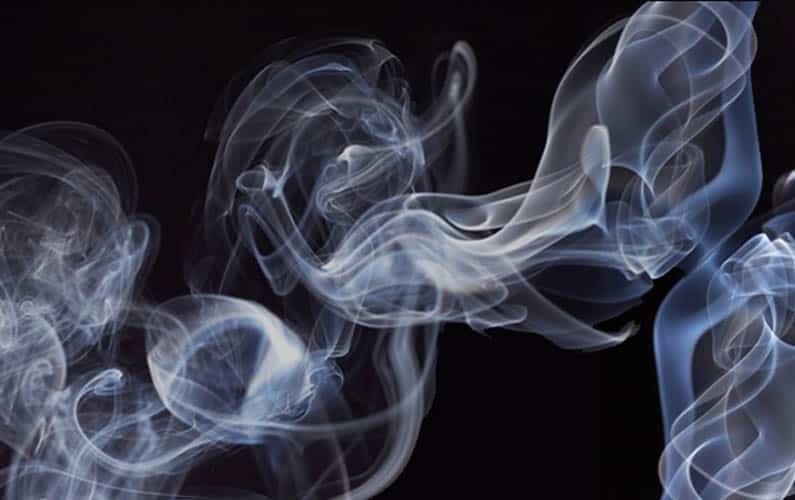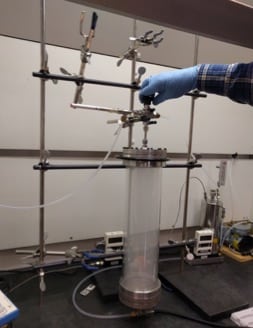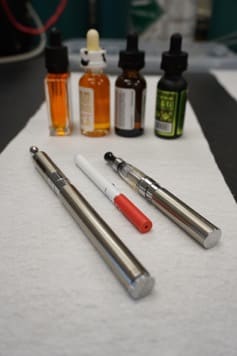Celebrating over 15 years of science in the classroom
DRI Science Alive Program launches new brand, new tools for Nevada’s teachers
RENO, Nev. (Apr. 13, 2017) – Building on nearly two decades of science education and outreach across Nevada, the Desert Research Institute today announced a new brand and renewed focus for its preK-12 outreach program.
DRI’s Science Alive program – formerly known as Green Power – has expanded its reach to provide Nevada’s preK-12 educators with a comprehensive set of modern tools and resources focused on science-based, environmental education.
“Our mission with Science Alive is to extend the amazing science and innovation that happens every day at DRI into the classroom,” said Amelia Gulling, DRI Science Alive program administrator.
Science Alive provides inquiry-based STEM (science, technology, engineering, and mathematics) curriculum, classroom supplies, and professional trainings to any teacher in Nevada that is interested.
Green Boxes
Through its Green Boxes, self-contained teaching kits, Science Alive offers educators from any grade level a unit of lesson plans and all of the classroom and field supplies necessary to engage students in hands-on projects that foster critical thinking and problem solving skills.
Science Alive offers more than 100 Green Boxes with Next Generation Science Standards based lessons designed to enhance student literacy in various STEM subject areas – from the water cycle and soil science to the life cycle of garbage and harnessing the sun’s energy.
“Thanks to the generous support from our long-time program sponsors, such as NV Energy, we are able to offer Green Boxes as a completely free resource to any formal or informal educator in Nevada,” explained Gulling.
Since their inception in 2000, Green Boxes have reached over 65,000 students, in more than 400 schools, across every county in the state.
DRI Science Alive Program launches new brand, new tools for Nevada’s teachers
Reno, Nev. – Building on nearly two decades of science education and outreach across Nevada, the Desert Research Institute today announced a new brand and renewed focus for its preK-12 outreach program.
DRI’s Science Alive program – formerly known as Green Power – has expanded its reach to provide Nevada’s preK-12 educators with a comprehensive set of modern tools and resources focused on science-based, environmental education.
“Our mission with Science Alive is to extend the amazing science and innovation that happens every day at DRI into the classroom,” said Amelia Gulling, DRI Science Alive program administrator.
Science Alive provides inquiry-based STEM (science, technology, engineering, and mathematics) curriculum, classroom supplies, and professional trainings to any teacher in Nevada that is interested.
Green Boxes
Through its Green Boxes, self-contained teaching kits, Science Alive offers educators from any grade level a unit of lesson plans and all of the classroom and field supplies necessary to engage students in hands-on projects that foster critical thinking and problem solving skills.
Science Alive offers more than 100 Green Boxes with Next Generation Science Standards based lessons designed to enhance student literacy in various STEM subject areas – from the water cycle and soil science to the life cycle of garbage and harnessing the sun’s energy.
“Thanks to the generous support from our long-time program sponsors, such as NV Energy, we are able to offer Green Boxes as a completely free resource to any formal or informal educator in Nevada,” explained Gulling.
Since their inception in 2000, Green Boxes have reached over 65,000 students, in more than 400 schools, across every county in the state.
Teacher Trainings
Science Alive also offers a multitude of teacher trainings, professional development workshops, and field sessions centered on science and innovation.
As part of the STEM Stream at DRI – a career-long and lifelong continuum for STEM research, education, and application – Science Alive teacher trainings are designed to expand educators’ possibilities, promote professional networking, and often count toward educators’ continuing education credits and serve as in-service credit days from the Nevada Department of Education.
In early March, Science Alive partnered with Nevada State College and welcomed more than 30 teachers to explore Unmanned Air Systems (UAS) as a fun and engaging way to incorporate STEM into the classroom. Educators who attend this free training developed UAS curriculum that will be turned into a UAS Green Box for state-wide use next school year.
Community Partnerships
Originally developed to promote renewable energy technologies in Nevada’s schools, Science Alive has since secured a depth of community partners and program funding sponsors from across nearly off of Nevada’s key industries and business sectors.
“We are extremely proud to have helped DRI grow this tremendous community resource into the robust program it is today,” Mary Simmons, Vice President of Business Development and Community Strategy for NV Energy. “NV Energy has a strong tradition of community involvement and is committed to improving education at all levels in the communities where we live and work.”
Science Alive will continue its advocacy of renewable energy and conservation through its EnergySmart Education Series – which will provide teacher trainings, Green Boxes, school support, field trips, and a speaker series for preK-12 educators with an emphasis on energy, energy efficiency, and related topics.
For more information on DRI’s Science Alive program visit sciencealive.dri.edu
Science Alive also offers a multitude of teacher trainings, professional development workshops, and field sessions centered on science and innovation.
As part of the STEM Stream at DRI – a career-long and lifelong continuum for STEM research, education, and application – Science Alive teacher trainings are designed to expand educators’ possibilities, promote professional networking, and often count toward educators’ continuing education credits and serve as in-service credit days from the Nevada Department of Education.
In early March, Science Alive partnered with Nevada State College and welcomed more than 30 teachers to explore Unmanned Air Systems (UAS) as a fun and engaging way to incorporate STEM into the classroom. Educators who attend this free training developed UAS curriculum that will be turned into a UAS Green Box for state-wide use next school year.
Community Partnerships
Originally developed to promote renewable energy technologies in Nevada’s schools, Science Alive has since secured a depth of community partners and program funding sponsors from across nearly off of Nevada’s key industries and business sectors.
“We are extremely proud to have helped DRI grow this tremendous community resource into the robust program it is today,” Mary Simmons, Vice President of Business Development and Community Strategy for NV Energy. “NV Energy has a strong tradition of community involvement and is committed to improving education at all levels in the communities where we live and work.”
Together, NV Energy customer donations and grants from the NV Energy Foundation have provided more than $1 million in resources to help Science Alive promote renewable energy preK-12 education and conscious living practices since 2000.
Science Alive will continue its advocacy of renewable energy and conservation through its EnergySmart Education Series – which will provide teacher trainings, Green Boxes, school support, field trips, and a speaker series for preK-12 educators with an emphasis on energy, energy efficiency, and related topics.
For more information on DRI’s Science Alive program visit sciencealive.dri.edu


